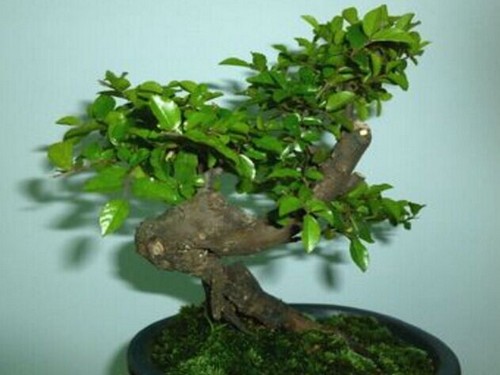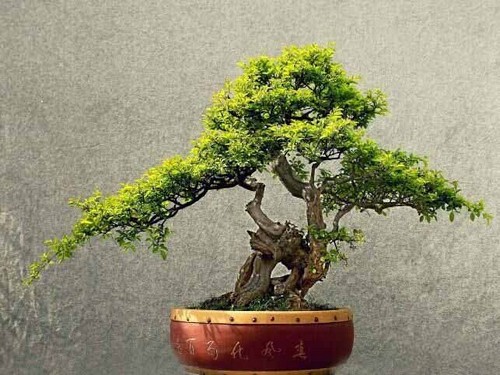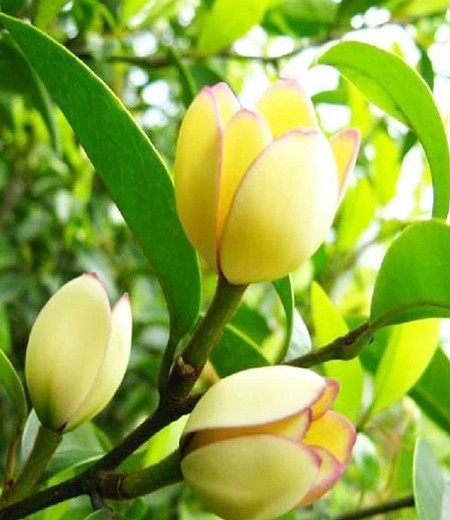Modeling Technology of Finch Plum Bonsai
Sparrow plum, also known as thorn, sparrow plum vine, sour fruit, sour young tree, is a deciduous climbing shrub of the family Rhamnaceae. Its roots are naturally strange and the trees are vigorous and elegant. It is one of the main species of bonsai stumps in China. Finch plum is the main bonsai tree species of Lingnan School and Su School. It is also often used in other areas. It is also one of the five famous trees in Lingnan bonsai and one of the bonsai plants exported to the United States.

Sparrow plum is the best in tree stump bonsai, with upright temperament, strong germination, good adaptability, exuberant vitality, changeable seasons, thousand faces, suitable for making bonsai of various styles, with high ornamental value. So how does the sparrow plum bonsai look good?
The newly excavated sparrow plum stump must be properly pruned. For wild sparrow plum, it needs to be cultivated and nurtured for a certain period of time before it can be processed.
1. After the stump is collected and transported back, it is properly trimmed according to the size of the pot and the physiological habits of the stump. Smear the branch wound or impregnate the tree root with solutions such as 0.3% 0.5% potassium permanganate or 500% 800-fold solution, such as carbendazim, green milk copper, topzine, etc., and then plant it into the nursery and water thoroughly. Bandage the moss or grass on the old piles and branches, smear the branch wound with white latex or vegetable oil, and then seal the large wound with film.
2. After the new buds germinate, remove the moss or grass that covers the old stakes and branches, so as not to affect the growth of the buds. At this time, the underground part has not yet taken root, so it is necessary to build a shade shed and strengthen water management to reduce leaf water evaporation and prevent buds from sunburn. When the buds grow to 1cm or 2cm, remove some unsuitable and overdense buds to ensure that the remaining buds grow and thrive. Picking buds can be carried out in 3 or 4 times.
3. After the excavated sparrow plum stump is fully survived (that is, after being cultivated to September to October in the second year), it should be observed and studied repeatedly according to the characteristics of the tree shape, conceived and then processed.
4. Preliminary processing. After the sparrow plum stump survived completely, under the condition of less water and less fertilizer, the roots were retracted many times with soil, and the roots and branches were further pruned to form the skeleton of bonsai. Attention should be paid to giving full play to its natural beauty and preserving the edges, wrinkles, rugged and old peculiarities on the branches. If you do more, you should consider the changes of height, size, distance, density and the echo relationship between front and back, left and right. At the same time, the trunk and main branches that need to be processed can be carried out in this period. After the preliminary processing, the sparrow plum stump can be planted in the pot after another 1-2 years of cultivation, and then further detailed processing will be made later. The upper basin should be carried out before sprouting in spring.
5. meticulous processing. According to the conception and design of sparrow plum bonsai, the following three steps are adopted for artistic processing.
Pruning: the excessively long branches of Finch plum are truncated to promote the germination and growth of lateral buds under the cutting mouth, which can make the sparrow plum stump shoot 2 or 4 times a year, increase the number of branches and shorten the distance between branches, and make the stump take shape as soon as possible. In the future, on the basis of maintaining its beautiful shape, too many dense branches will be cut off to make the sparrow plum stump grow normally.
Binding: according to the thickness of the sparrow plum branch, select the appropriate iron wire, steel wire or aluminum wire, wrap a layer of paper or cloth, wrap it around the branch in the adjusted direction, and bend it. It can also be tied with brown silk or brown rope, and the branches can be bent and fastened with brown silk or brown rope. Note that whether it is bound with wire or brown wire, it should be untied every 3 to 4 months to prevent the branches from sinking into the bark and affecting the growth and appearance of the tree.
Tigen: the sparrow plum pile scene of cultivating exposed roots can be placed in a deeper basin or nursery, the lower layer is fertile soil, and the upper layer is sandy soil, so that the new root is inserted into the fertile soil, and part of the sandy soil is removed from time to time and moved into the selected shallow pot. make it hang the root and show the stem, vigorous and powerful.
Time: 2019-06-12 Click:
- Prev

Pruning method of sparrow plum bonsai
Finch plum can be used as hedge and vertical greening material in gardens, and it is also suitable for allocation in mountains and rocks. this kind of plant has strong adaptability, loose requirements for soil quality, acid, neutral and calcareous soil can adapt, and is resistant to drought, moisture and barren.
- Next

Modeling method of Michelia bonsai
Michelia is a traditional ornamental plant, many friends worry about whether it is poisonous, afraid of affecting the health of their families, in fact, it is non-toxic, on the contrary, it also has a good household function, medicinal value and beauty care function. The branches of Michelia mollissima are elegant, the leaves are green, the flowers are particularly charming when they are in full bloom, and they exude a rich aroma.
Related
- Fuxing push coffee new agricultural production and marketing class: lack of small-scale processing plants
- Jujube rice field leisure farm deep ploughing Yilan for five years to create a space for organic food and play
- Nongyu Farm-A trial of organic papaya for brave women with advanced technology
- Four points for attention in the prevention and control of diseases and insect pests of edible fungi
- How to add nutrient solution to Edible Fungi
- Is there any good way to control edible fungus mites?
- Open Inoculation Technology of Edible Fungi
- Is there any clever way to use fertilizer for edible fungus in winter?
- What agents are used to kill the pathogens of edible fungi in the mushroom shed?
- Rapid drying of Edible Fungi

